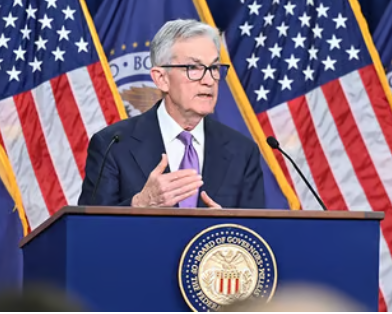
(Photo : Fed Reserve)
- The U.S. labor market is under pressure with rising unemployment claims and wage pressures.
- External factors like natural disasters and strikes have also impacted job growth.
- The Federal Reserve's policy easing cycle and concerns about inflation are influencing the economic landscape.
- The labor market is expected to see job growth in November, but the Federal Reserve may need to rethink its approach to lowering interest rates.
The U.S. labor market has been a focal point of economic discussions in recent weeks. The number of Americans filing new applications for unemployment benefits rose slightly, suggesting no significant change in the labor market. This reinforces views that recent hurricanes and strikes have almost stalled job growth in October. The Labor Department reported that initial claims for state unemployment benefits increased by 3,000 to a seasonally adjusted 221,000 for the week ended Nov. 2. Economists had forecast 221,000 claims for the latest week.
However, the labor market is not the only area of concern. Wage pressures are showing signs of not abating at the same pace, casting a shadow on the inflation and interest rate outlook. Unit labor costs increased at a solid clip in the third quarter, according to other data from the Labor Department. Unit labor costs growth is the single biggest determinant of labor-intensive core services prices, said Paul Ashworth, chief North America economist at Capital Economics. Unless unit labor costs growth slows again, it will be a lot harder for Fed officials to claim that inflation can be sustained at 2%.
The strong rise in labor costs, accompanied by a sharp upward revision to the second-quarter data, could worry Federal Reserve officials, who were wrapping up a two-day policy meeting. The U.S. central bank was expected to cut interest rates by 25 basis points, lowering its policy rate to the 4.50%-4.75% range.
External Factors Impacting the Labor Market
The labor market was also affected by external factors such as natural disasters and strikes. Employment growth slowed sharply last month, with nonfarm payrolls increasing by only 12,000 jobs, the fewest since December 2020. This aligned with a surge in claims in early October as Hurricane Helene disrupted economic activity in the U.S. Southeast region. Applications stayed elevated through the middle of last month after Hurricane Milton lashed Florida.
A strike by factory workers at Boeing, which forced the planemaker to implement rolling furloughs, also weighed on payrolls in October. The disruptions from the hurricanes have almost faded, and the striking workers have gone back to work after agreeing to a new contract this week, paving the way for an acceleration in job growth in November.
The number of people receiving benefits after an initial week of aid, a proxy for hiring, rose 39,000 to a seasonally adjusted 1.892 million during the week ending Oct. 26. The Boeing-related furloughs are mostly keeping the so-called continuing claims elevated. The settlement of the Boeing strike will bring down the number of continuing claims as soon as next week's report, said Carl Weinberg, chief economist at High Frequency Economics.
Federal Reserve's Response and Inflation Concerns
The Federal Reserve embarked on its policy easing cycle with an unusually large half-percentage-point rate cut in September, the first reduction in borrowing costs since 2020. It hiked rates by 525 basis points in 2022 and 2023 to curb high inflation. The dollar slipped against a basket of currencies. U.S. Treasury yields were higher as investors continued to digest Donald Trump's victory in the U.S. presidential election that has fueled fears his economic policies could stoke inflation.
Concerns about inflation were amplified by a separate report from the Labor Department's Bureau of Labor Statistics showing unit labor costs - the price of labor per single unit of output - rose at a solid 1.9% rate in the July-September quarter after an upwardly revised 2.4% pace of expansion in the second quarter. Labor costs were previously reported to have edged up at a 0.4% pace in the second quarter.
The revisions reflected annual upgrades to national accounts data published in September, which showed stronger income and overall economic growth than previously estimated. Labor costs increased at a 3.4% rate from a year ago, up from a 3.2% pace in the second quarter. At this pace, unit labor costs are incompatible with a return to 2% inflation in the context of stable profit margins and the Fed is going to have to rethink how much room it has to lower interest rates, said Conrad DeQuadros, senior economic advisor at Brean Capital.









